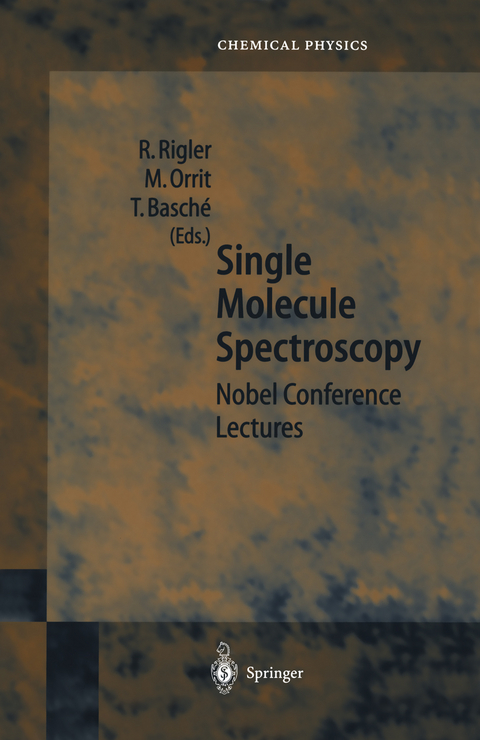
Single Molecule Spectroscopy
Springer Berlin (Verlag)
978-3-642-62702-6 (ISBN)
1 History of Optical Trapping and Manipulation of Small Neutral Particles, Atoms, and Molecules.- 2 Thirteen Years of Single-Molecule Spectroscopy in Physical Chemistry and Biophysics.- 3 The Electronic Structure of Single Photosynthetic Pigment-Protein Complexes.- 4 Single-Molecule Optical Switching: A Mechanistic Study of Nonphotochemical Hole-Burning.- 5 Triggered Emission of Single Photons by a Single Molecule.- 6 Photophysics of Conjugated Polymers Unmasked by Single Molecule Spectroscopy.- 7 Confining and Probing Single Molecules in Synthetic Liposomes.- 8 Single Molecule Detection Using Near Infrared Surface-Enhanced Raman Scattering.- 9 Single-Molecule Fluorescence - Each Photon Counts.- 10 Fluorescence Correlation Spectroscopy in Single-Molecule Analysis: Enzymatic Catalysis at the Single Molecule Level.- 11 The Characterization of a Transmembrane Receptor Protein by Fluorescence Correlation Spectroscopy.- 12 Applications of Dual-Color Confocal Fluorescence Spectroscopy in Biotechnology.- 13 Single-Molecule Enzymology.- 14 Single-Molecule Enzymology.- 15 The Energy Landscape.- 16 Coherent Intramolecular Dynamics in Small Enzyme Populations.- 17 Single-Molecule Dynamics in Biosystems.- 18 Single-Molecule Dynamics Associated with Protein Folding and Deformations of Light-Harvesting Complexes.- 19 The Study of Single Biomolecules with Fluorescence Methods.- 20 Studying the Green Fluorescent Protein with Single-Molecule Spectroscopy.
| Erscheint lt. Verlag | 9.10.2012 |
|---|---|
| Reihe/Serie | Springer Series in Chemical Physics |
| Zusatzinfo | XVIII, 355 p. |
| Verlagsort | Berlin |
| Sprache | englisch |
| Maße | 155 x 235 mm |
| Gewicht | 581 g |
| Themenwelt | Naturwissenschaften ► Chemie ► Analytische Chemie |
| Naturwissenschaften ► Chemie ► Physikalische Chemie | |
| Naturwissenschaften ► Physik / Astronomie ► Atom- / Kern- / Molekularphysik | |
| Technik | |
| Schlagworte | Biophysics • Chemistry • enzymes • fluorescence • Membrane • Microscopy • Molecule • Optical microscopy • Optical Spectroscopy • Optics • particles • Physical Chemistry • Protein • scattering • Single molecules • spectroscopy |
| ISBN-10 | 3-642-62702-1 / 3642627021 |
| ISBN-13 | 978-3-642-62702-6 / 9783642627026 |
| Zustand | Neuware |
| Haben Sie eine Frage zum Produkt? |
aus dem Bereich


